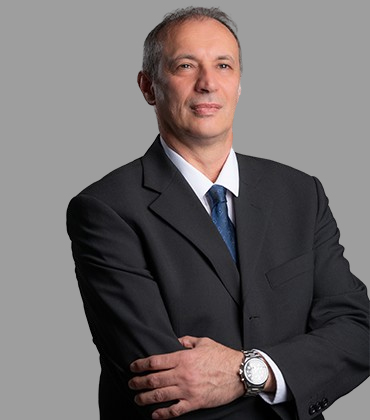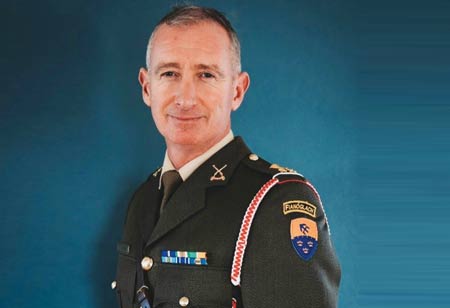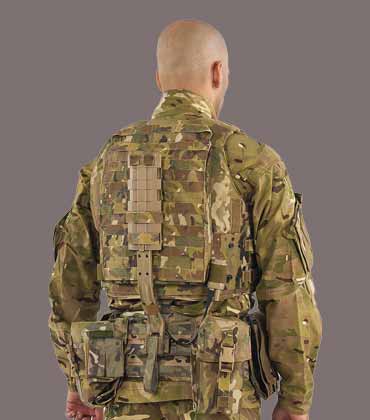THANK YOU FOR SUBSCRIBING
Combat readiness begins long before deployment. It’s embedded in the gear soldiers wear. From moisture management to mobility and interoperability, these foundational elements turn combat clothing into critical enablers of mission success. Level Peaks, founded in 2007 by former users of the very systems they now develop and supply, has built its reputation on that lived insight. Today, the company is recognised as a trusted partner to frontline forces and procurement leaders, delivering innovative, field-proven solutions that move as the mission demands. That trust is earned through enduring collaborations with some of the world’s best-performing brands. Level Peaks’ longstanding collaboration with Crye Precision reflects their shared commitment to co-developing equipment around the unforgiving demands of the harshest operational environments. Together, they are pushing the evolutionary envelope of mission-critical systems beyond minimum standards to meet the realities of modern conflict. One of the defining strengths of the design philosophy is that integration is not an add-on but the foundation. The “system-of-systems” approach as a guiding principle assures every element, from base layers to ballistic protection to outer shells, is engineered to interact seamlessly with body armour, load carriage, weapons, communications systems and sensors. Compatibility is not enough. It is their true cohesion that lowers cognitive burden and allows soldiers to adapt faster, move lighter, and focus entirely on the mission. “You can sew a garment from a pattern,” says CEO Chris Willis, “but unless you know why the seams are placed the way they are, how the layers and stitching interact under load, or how materials behave and degrade under prolonged wear, you’re just guessing. You won’t get close.” Level Peaks’ designs are grounded in years of frontline feedback and shaped through continuous development cycles. Whether in extreme climates, high-tempo movements or prolonged engagements, the designs deliver sustained performance. “We won’t put our name to anything that doesn’t serve the end user. It doesn’t leave our hands if it isn’t fit for purpose,” states Gordon Park, solutions team coordinator and BD manager, highlighting the company’s promise to its customers.
Top Aviation Mro Service in Europe 2025
Operating at the sharp end, FAI has earned its stripes as one of the most trusted names in mission-critical aviation. Headquartered at Nuremberg International Airport, the award-winning German aviation company has built a global reputation for delivering rapid, reliable, and quality services across medical air transport, executive charter, aircraft management, and comprehensive MRO solutions. At the helm is visionary founder and chairman, Siegfried Axtmann, who launched the company in 1987. Since then, FAI has transformed from a private helicopter repatriation club into a powerhouse of specialized aviation solutions with 2024 revenues topping €130 million. Central to FAI’s success is its ability to operate seamlessly across the most complex and sensitive aviation segments. Whether airlifting critically ill patients from remote, politically unstable regions or executing bespoke VIP charter flights at a moment’s notice, FAI deploys a mission-specific, state-of-the-art fleet ranging from long-range Bombardier Global Express jets to fully equipped air ambulance Learjets. Responding Rapidly to Global Emergencies FAI’s ability to respond with speed and precision is exemplary. “In air ambulance, clients don’t come to us when things are easy, they call us when every second counts,” says Axtmann. “We’re trusted to deliver when time is critical, and precision is paramount.” One particularly striking air ambulance mission involved an emergency medevac from a remote region in West Africa. Where other providers hesitated, FAI mobilized within hours and completed the bedside-to-bedside mission within a day, saving a life and deepening a long-standing partnership with an international NGO.
Wildfire Prevention With Space Technology Company of the Year in UK 2025
“The two most important days in your life are the day you are born and the day you find out why.”—Mark Twain. Eleftherios Plafountzis, aerospace engineer and the founder of Prometheus Space Technologies, discovered his true sense of purpose on July 23, 2018. As the devastating Mati wildfire ravaged Greece, claiming over 100 lives and destroying communities, Eleftherios found a renewed resolve in the face of overwhelming tragedy. With decades of experience working on advanced aerospace platforms like the F-16 and C-130 and academic training at MIT and Harvard, Eleftherios had the technical expertise. But the wildfire gave his skills new meaning: to harness the power of space technology for the greater good of humanity. No longer was it enough to innovate within aerospace. Eleftherios recognized that technology had to serve a higher purpose that could help predict, prevent, and respond to disasters like the one that unfolded in Mati. This realization led to the creation of Prometheus Space Technologies, a company born from a mission to protect Earth through cutting-edge space-based systems. Named after the mythological titan who brought fire to humanity, Prometheus Space Technologies is focused on leveraging space technology and AI to prevent the devastating fires that threaten the world. “Using space-age innovation, AI-powered satellites, IoT sensors, and predictive analytics, we spot fires before they spark. No more reacting to a disaster; now we prevent it,” says Eleftherios, Founder and CEO. At the heart of its arsenal is the Prometheus Fire Guardian Fusion Platform, a revolutionary system that blends multi-orbital satellite imagery (GEO, LEO, VLEO), IoT sensors, AI-driven analytics, and autonomous aerial systems into a 24/7 wildfire defence ecosystem. Prometheus Space Technologies is committed to making world-class wildfire prevention accessible to everyone, including governments, small communities, homeowners, and businesses.
CXO INSIGHTS
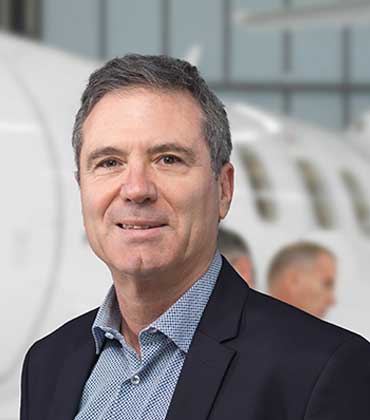
Future of Digitalised Aerospace Industry
Bruno Cervia, Deputy CEO and VP, R&D, Pilatus Aircraft Ltd
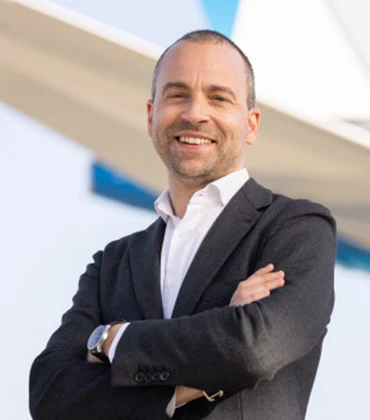
Optimising Predictive Maintenance for Airlines
Enea Fracassi, Chief Operating Officer, Accountable Manager, Corsair International

Support of the newly acquired defensive systems within the domestic military and industrial environment
Liviu Bran, Maintenance Manager, and Oana Rahim Pour, Bid&Marketing Office, Romaero SA Bucharest

Developments in Aircraft Architecture Design
Thomas Ahn, Chief Engineer D328eco, Deutsche Aircraft

New Space 3.0 Enables Responsiveness, Resilience and Availability
Christina Aas, Technical Director, SmallSat Systems, Kongsberg Defence & Aerospace
IN FOCUS
EDITORIAL
A Strategic Leap in Aerospace Technology and Defence Readiness
Across Europe, defence and aerospace organisations are advancing technologies that transform operations—on the battlefield, in disaster zones, and across aircraft hangars. Though varied in purpose, these innovations share a common goal: enhancing capability, agility, and long-term readiness. One of the most visible changes is in soldier protection. Combat clothing systems are being transformed with advanced fabrics, modular armour, and integrated sensors. These next-generation uniforms improve mobility, situational awareness, and thermal regulation in unpredictable environments. Beyond the battlefield, space-based technologies are vital to environmental and civil defence. As wildfires grow more frequent, Europe’s space sector is deploying satellites with thermal imaging and AI analytics. These systems provide emergency teams real-time data, enabling faster detection and response. Meanwhile, the aviation sector is innovating to meet growing demands. Maintenance, repair, and overhaul (MRO) services have become strategic as military and special-mission aircraft fly longer, more demanding missions. European MRO providers are adopting predictive maintenance, digital diagnostics, and sustainable retrofits to extend aircraft life and ensure mission continuity. Whether sustaining legacy fleets or adapting newer aircraft for multi-role use, MRO is central to resilience. From advanced ground gear to satellite fire monitoring and aircraft sustainment, Europe is investing where it counts—on the frontlines of safety and readiness. In this edition of Aerospace and Defense Review Europe, we spotlight leading innovators in combat clothing, satellite-enabled wildfire prevention, and aviation MRO—trailblazers shaping the future of mission readiness. We also feature expert insights from industry leaders. Colonel Gareth Prendergast, Head of Strategic Force Design at the Irish Defence Forces, shares how meticulous planning, civil-military collaboration, and forward-thinking logistics enable success under pressure. Rob Mitchell, Global Engineering Director, Installations Operating Unit at ITP Aero, discusses how the aviation sector is adopting cleaner propulsion systems and aligning with global initiatives, such as Race to Zero and Clean Aviation, to meet sustainability goals without compromising performance. We invite you to explore the insights and leadership in this edition and discover how Europe’s defence and aerospace organisations are building a more agile, resilient, and future-ready world.

However, if you would like to share the information in this article, you may use the link below:
https://www.aerospacedefenserevieweurope.com/edition/july-2025-35.html






